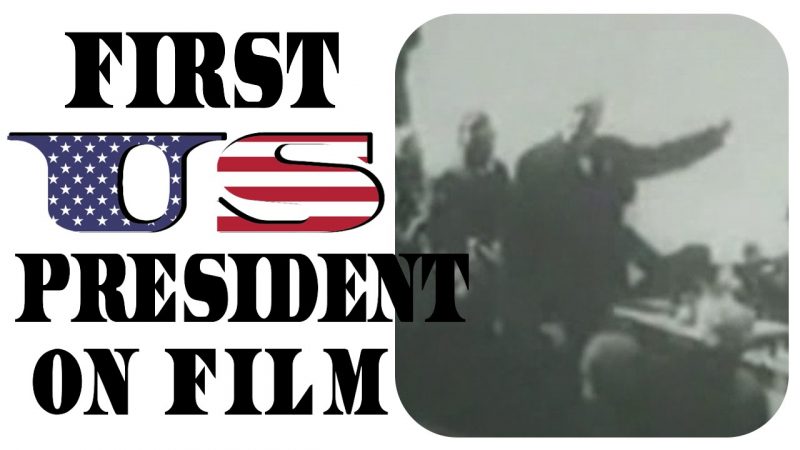The video bellow, compiled by the awesome guys at yestervid, with dates and subtitles, shows the oldest surviving footage of U.S. president.
The clip shows the inaugural procession of the 25th President of the United States of America, William McKinley, and was filmed on March 4th, 1897.
McKinley was elected shortly after the invention of film. The procession, including the famous Black Horse Cavalry, was filmed as it travels down Pennsylvania Avenue in Washington D.C.
Here is the video
source: yestervid
McKinley was the last president to have served in the American Civil War, beginning as a private in the Union Army and ending as a brevet major. After the war, he settled in Canton, Ohio, where he practiced law and married Ida Saxton. In 1876, he was elected to Congress, where he became the Republican Party’s expert on the protective tariff, which he promised would bring prosperity. His 1890 McKinley Tariff was highly controversial; which together with a Democratic redistricting aimed at gerrymandering him out of office, led to his defeat in the Democratic landslide of 1890. He was elected Ohio’s governor in 1891 and 1893, steering a moderate course between capital and labor interests. With the aid of his close adviser Mark Hanna, he secured the Republican nomination for president in 1896, amid a deep economic depression. He defeated his Democratic rival, William Jennings Bryan, after a front-porch campaign in which he advocated “sound money” (the gold standard unless altered by international agreement) and promised that high tariffs would restore prosperity.
Rapid economic growth marked McKinley’s presidency. He promoted the 1897 Dingley Tariff to protect manufacturers and factory workers from foreign competition, and in 1900, he secured the passage of the Gold Standard Act. McKinley hoped to persuade Spain to grant independence to rebellious Cuba without conflict, but when negotiation failed, he led the nation in the Spanish–American War of 1898; the U.S. victory was quick and decisive. As part of the peace settlement, Spain turned over to the United States its main overseas colonies of Puerto Rico, Guam, and the Philippines; Cuba was promised independence, but at that time remained under the control of the U.S. Army. The United States annexed the independent Republic of Hawaii in 1898 and it became a U.S. territory.
Historians regard McKinley’s 1896 victory as a realigning election, in which the political stalemate of the post-Civil War era gave way to the Republican-dominated Fourth Party System, which began with the Progressive Era. McKinley defeated Bryan again in the 1900 presidential election, in a campaign focused on imperialism, protectionism, and free silver. However, his legacy was quickly cut short when he was shot on September 6, 1901 and died eight days later due to his injury, by Leon Czolgosz, a second-generation Polish-American with anarchist leanings; McKinley was succeeded by Vice President Theodore Roosevelt. As an innovator of American interventionism and pro-business sentiment, McKinley’s presidency is generally considered above average, though his universally positive public perception was soon overshadowed by Roosevelt.
McKinley’s biographer, H. Wayne Morgan remarks that McKinley died the most beloved president in history. However, the young, enthusiastic Roosevelt quickly captured public attention after his predecessor’s death. The new president made little effort to secure the trade reciprocity McKinley had intended to negotiate with other nations.
